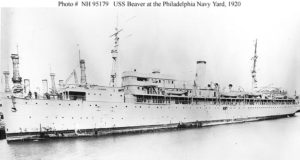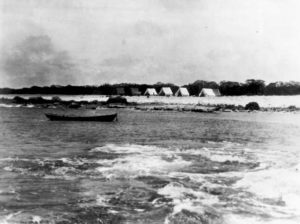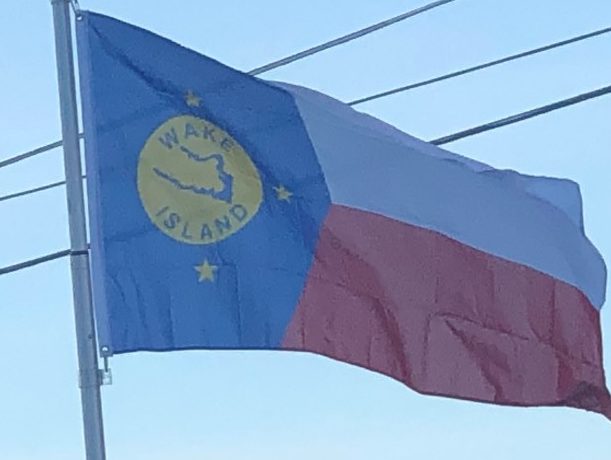
Lt. Cmdr. Sherwood Picking reported that from “a strategic point of view, Wake Island could not be better located, dividing as it does with Midway, the passage from Honolulu to Guam into almost exact thirds.” He observed that the boat channel was choked with coral heads and that the lagoon was very shallow and not over 15 feet in depth and therefore Wake would not be able to serve as a base for surface vessels. Picking suggested clearing the channel to the lagoon for “loaded motor sailing launches” so that parties on shore can receive supplies from passing ships and he strongly recommended that Wake is used as a base for aircraft. Picking stated that “If the long heralded trans-Pacific flight ever takes place, Wake Island should certainly be occupied and used as an intermediate resting and fueling port.”
Tanager Expedition:
In 1923, a joint expedition by the then Bureau of the Biological Survey (in the U.S. Department of Agriculture), the Bernice Pauahi Bishop Museum and the United States Navy was organized to conduct a thorough biological reconnaissance of the Northwestern Hawaiian Islands, then administered by the Biological Survey Bureau as the Hawaiian Islands Bird Reservation. On February 1, 1923, Secretary of Agriculture Henry C. Wallace contacted Secretary of Navy Edwin Denby to request Navy participation and recommended expanding the expedition to Johnston, Midway and Wake, all islands not administered by the Department of Agriculture.

On July 27, 1923, USS Tanager, a World War I minesweeper, brought the Tanager Expedition to Wake Island under the leadership of ornithologist Alexander Wetmore, and a tent camp was established on the eastern end of Wilkes. From July 27 to August 5, the expedition charted the atoll, made extensive zoological and botanical observations and gathered specimens for the Bishop Museum, while the naval vessel under the command of Lt. Cmdr. Samuel Wilder King conducted a sounding survey offshore. Other achievements at Wake included examinations of three abandoned Japanese feather poaching camps, scientific observations of the now extinct Wake Island rail and confirmation that Wake Island is an atoll, with a group comprising three islands with a central lagoon. Wetmore named the southwest island for Charles Wilkes, who had led the original pioneering United States Exploring Expedition to Wake in 1841. The northwest island was named for Titian Peale, the chief naturalist of that 1841 expedition.
Pan American Airways and the U.S. Navy:
Juan Trippe, president of the world’s then largest airline, Pan American Airways (PAA), wanted to expand globally by offering passenger air service between the United States and China. To cross the Pacific Ocean his planes would need to island-hop, stopping at various points for refueling and maintenance. He first tried to plot the route on his globe but it showed only open sea between Midway and Guam. Next, he went to the New York Public Library to study 19th-century clipper ship logs and charts and he “discovered” a little-known coral atoll named Wake Island. To proceed with his plans at Wake and Midway, Trippe would need to be granted access to each island and approval to construct and operate facilities; however, the islands were not under the jurisdiction of any specific U.S. government entity.
